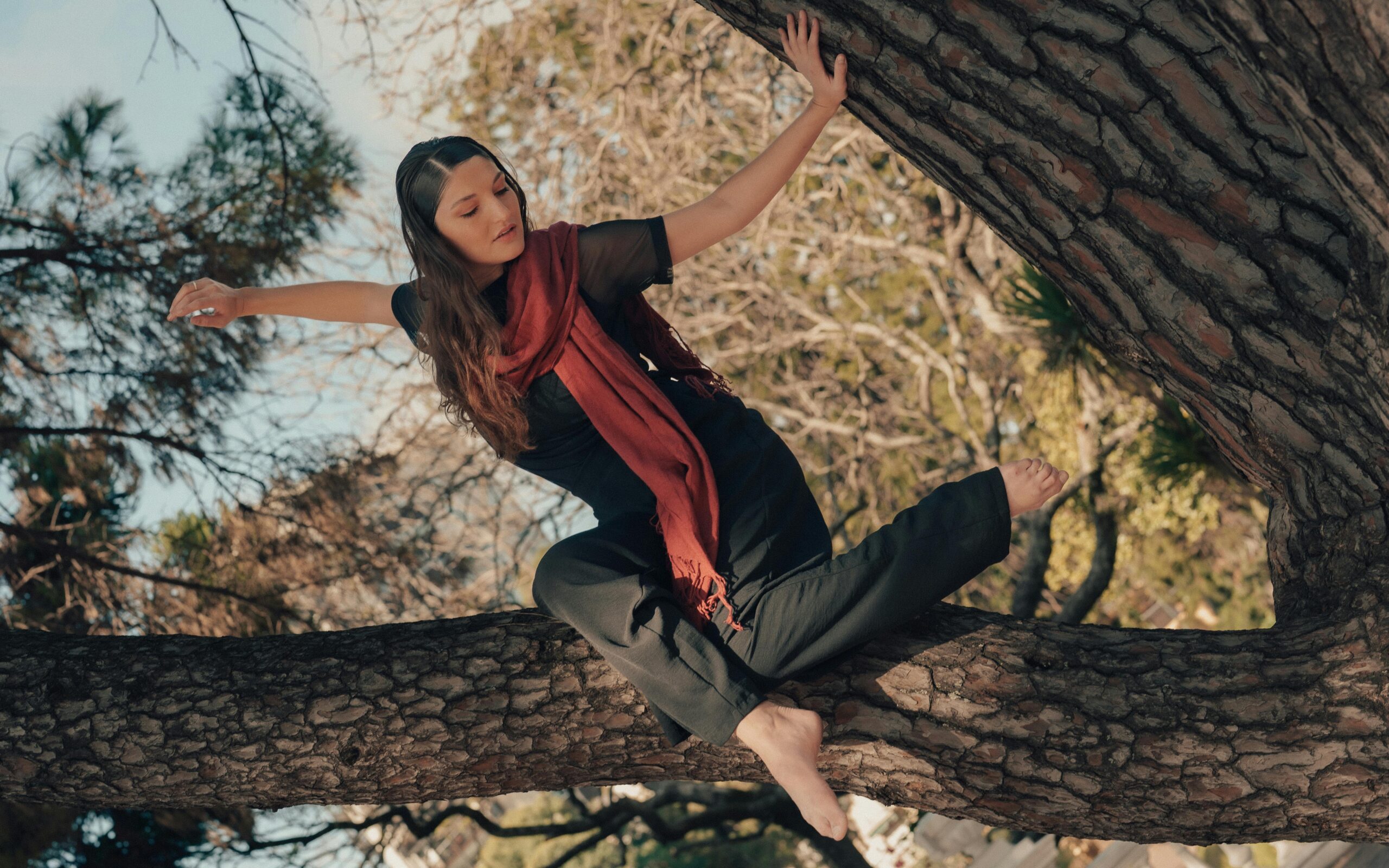Rooting practices offer a transformative pathway to physical balance, mental clarity, and emotional resilience through ancient techniques that connect body, mind, and earth.
🌱 The Ancient Wisdom Behind Rooting Practices
Throughout human history, cultures across the globe have recognized the profound importance of feeling grounded and connected to the earth beneath our feet. From the martial arts traditions of Asia to indigenous ceremonies in the Americas, rooting practices have served as foundational techniques for cultivating stability, strength, and inner peace. These time-honored methods are experiencing a renaissance in our modern world, where many feel disconnected, overwhelmed, and unbalanced.
Rooting, also known as grounding or earthing, refers to the practice of establishing a strong connection between your body and the ground. This connection isn’t merely physical—it encompasses energetic, mental, and emotional dimensions that work synergistically to create a sense of wholeness and presence. When we root ourselves effectively, we tap into the earth’s natural energy while simultaneously finding our center of gravity, both literally and metaphorically.
The science behind these practices has begun catching up with ancient wisdom. Research in fields ranging from biomechanics to neuroscience reveals that intentional grounding techniques can measurably improve balance, reduce inflammation, enhance proprioception, and even modulate stress hormones. This convergence of traditional knowledge and modern science validates what practitioners have known for millennia: being properly rooted is fundamental to optimal human functioning.
Understanding the Physical Mechanics of Rooting
At its core, physical rooting involves creating a stable base of support through proper alignment and weight distribution. When you stand with awareness of how your feet contact the ground, how your weight travels through your skeletal structure, and how your body responds to gravitational forces, you establish what martial artists call a “root” or what yoga practitioners might term “foundation.”
The feet contain approximately 7,200 nerve endings each, making them incredibly sensitive sensory organs. When we practice rooting, we activate these proprioceptors—specialized sensors that provide information about body position and movement. This heightened awareness creates a feedback loop between the ground and the brain, allowing for micro-adjustments that maintain equilibrium even in challenging situations.
Proper rooting engages specific muscle groups throughout the body. The intrinsic foot muscles, often neglected in modern footwear-dependent lifestyles, play a crucial role in creating a stable platform. The lower leg muscles, particularly the tibialis anterior and gastrocnemius, work to maintain ankle stability. Moving upward, the glutes, core muscles, and even the muscles along the spine contribute to maintaining vertical alignment while rooted.
Key Physical Principles of Effective Rooting
- Three-Point Contact: Distributing weight evenly across the heel, ball of the foot, and outer edge creates a stable triangular base
- Bent Knees: Slightly flexed knees lower the center of gravity and allow for dynamic adjustment
- Pelvic Alignment: A neutral pelvis ensures proper weight transmission through the skeletal structure
- Spinal Extension: Lengthening the spine upward while rooting downward creates balanced opposing forces
- Relaxed Shoulders: Tension in the upper body interferes with proper grounding through the lower body
⚖️ Balance Enhancement Through Rooting Techniques
Balance is not a static state but rather a constant process of adjustment and readjustment. Our bodies are perpetually making microscopic corrections to maintain equilibrium, whether we’re standing still, walking, or performing complex movements. Rooting practices enhance this natural balancing mechanism by improving the quality and speed of these adjustments.
One of the most effective rooting exercises for balance improvement is the simple practice of standing meditation. By standing in a neutral position with knees slightly bent, feet shoulder-width apart, and attention focused on the contact between feet and ground, practitioners develop what researchers call “postural stability.” Studies have shown that regular standing meditation practice can improve balance scores by up to 35% in just eight weeks.
Dynamic rooting practices take this further by maintaining connection to the ground while moving. Tai chi, for instance, emphasizes never fully committing weight to a step until the foot is properly rooted. This principle translates to improved balance in everyday activities, reducing the risk of falls—a significant concern as we age. Research published in the Journal of the American Geriatrics Society found that rooting-based practices reduced fall risk by 43% among elderly participants.
Progressive Rooting Exercises for Balance
Begin with basic exercises and gradually progress to more challenging variations as your rooting skills develop. Each exercise builds upon the previous one, creating a comprehensive training program for balance and stability.
Foundation Practice: Stand with feet parallel, hip-width apart. Close your eyes and notice how your weight shifts. Gradually stabilize these movements by imagining roots growing from your feet into the earth. Practice for 2-3 minutes daily, working up to 10 minutes.
Single-Leg Rooting: Shift your weight to one leg, lifting the other just an inch off the ground. Focus on rooting through all three points of the standing foot. Hold for 30 seconds, then switch sides. This dramatically improves proprioception and functional balance.
Dynamic Weight Shifting: In a wider stance, slowly shift weight from one leg to the other, ensuring each transition involves a moment of complete rooting before the weight transfer. This mirrors real-world balance demands.
🧘 Mental and Emotional Grounding Through Rooting
While the physical benefits of rooting are substantial, the mental and emotional advantages may be even more profound. In our hyperconnected, overstimulated world, many people report feeling ungrounded, scattered, or anxious. Rooting practices offer a tangible antidote to these modern maladies.
The act of focusing attention on the physical sensation of being grounded serves as a powerful anchor for the wandering mind. This is why rooting is often incorporated into mindfulness and meditation practices. When thoughts race or emotions overwhelm, returning attention to the feet and their connection with the earth provides an immediate stabilizing effect.
Neuroscience research using functional MRI has revealed that grounding practices activate the parasympathetic nervous system—the “rest and digest” mode that counterbalances the stress response. Regular practitioners show increased activity in brain regions associated with emotional regulation and decreased activity in areas linked to anxiety and rumination. One study found that just 20 minutes of grounding practice reduced cortisol levels by an average of 23%.
The psychological concept of “feeling grounded” isn’t merely metaphorical. There’s a direct relationship between physical stability and emotional equilibrium. When we establish a secure physical foundation, our nervous system interprets this as safety, allowing the mind to settle and emotions to stabilize. This body-mind connection explains why rooting practices are increasingly used in trauma therapy and anxiety treatment.
💪 Building Strength Through Rooted Movement
Rooting isn’t just about standing still—it’s a principle that can transform how we move and generate power. Athletes across disciplines have discovered that proper rooting dramatically enhances strength, power output, and movement efficiency. A martial artist’s punch, a tennis player’s serve, or a weightlifter’s deadlift all derive their power from a solid root.
When movement originates from a grounded position, force transfers efficiently through the kinetic chain—the interconnected system of joints and muscles that work together to produce motion. Poor rooting creates “energy leaks” where power dissipates rather than being directed toward the intended action. Proper rooting eliminates these inefficiencies, allowing the full potential of muscular strength to express itself.
Biomechanical studies have quantified this effect. Researchers found that athletes trained in rooting principles generated 18-25% more force in various movements compared to their pre-training baselines, without increasing muscle mass. This strength gain comes from improved neuromuscular coordination and more effective force transmission through the skeletal system.
Integrating Rooting Into Strength Training
Whether you’re lifting weights, doing bodyweight exercises, or practicing resistance training, incorporating rooting principles can enhance results while reducing injury risk. The key is establishing your root before initiating movement and maintaining that connection throughout the exercise.
Before any lift, take a moment to consciously connect with the ground. Press your feet firmly into the floor, engage your leg muscles, and feel how this creates a stable platform. During the movement, visualize drawing strength from the earth itself. This isn’t mystical thinking—it’s a cognitive strategy that optimizes motor unit recruitment and coordination.
Compound movements like squats and deadlifts particularly benefit from rooting awareness. Many lifters struggle with these exercises because they focus solely on the weight or the muscles being targeted, neglecting the foundational importance of how they connect with the ground. Proper rooting in these movements not only increases strength output but also protects the spine and joints by ensuring optimal load distribution.
🌍 Earthing: The Electrical Dimension of Rooting
Recent scientific research has revealed a fascinating electrical aspect of rooting that ancient practices may have intuited. The earth maintains a negative electrical charge, and direct physical contact with the ground allows electrons to flow into the body. This phenomenon, termed “earthing” or “grounding” in scientific literature, has measurable physiological effects.
Our modern lifestyle, with insulated footwear and limited outdoor time, has largely disconnected us from this natural electrical exchange. Studies suggest this disconnection may contribute to chronic inflammation, poor sleep, and various health issues. Research published in the Journal of Environmental and Public Health documented that earthing reduces blood viscosity, decreases inflammation markers, and improves heart rate variability—all indicators of better health.
The mechanism appears to involve the body’s electrical systems. Every cell maintains an electrical potential across its membrane, and inflammatory processes generate positively charged free radicals. The influx of negatively charged electrons from the earth may neutralize these free radicals, reducing inflammation and oxidative stress. While more research is needed, preliminary findings are compelling.
Incorporating earthing into your rooting practice is simple: practice barefoot on natural surfaces when possible. Grass, soil, sand, and even concrete (which retains some conductivity) allow this electrical exchange. Even 15-20 minutes of barefoot contact with the earth several times weekly may provide benefits, though longer and more frequent contact appears more effective.
🎯 Practical Applications Across Different Disciplines
The principles of rooting find expression across numerous physical disciplines, each adapting these fundamental concepts to their specific needs. Understanding how different practices approach rooting can deepen your own practice and provide fresh perspectives.
In yoga, rooting (often called “grounding through the foundation”) is emphasized in virtually every pose. Standing poses like Warrior I and II specifically develop rooting skills, while balance poses like Tree Pose challenge and refine them. The yoga tradition teaches that proper rooting in the lower body allows for freedom and expression in the upper body—stability enables mobility.
Martial arts traditions place tremendous emphasis on rooting, particularly internal styles like Tai Chi and Bagua. These arts teach that rooting isn’t about rigidity but rather about maintaining connection while remaining fluid and responsive. The ability to root and uproot quickly—to be stable yet mobile—defines mastery in these disciplines.
In modern athletic training, rooting principles are being integrated under terms like “ground force reaction training” and “tripod foot activation.” Strength coaches now recognize that teaching athletes to properly connect with the ground enhances performance across virtually all sports. Whether it’s a basketball player maintaining balance while driving to the basket or a runner optimizing force application with each stride, rooting matters.
🏠 Developing Your Personal Rooting Practice
Creating a consistent rooting practice doesn’t require special equipment or extensive time commitments. Even five to ten minutes daily can yield noticeable benefits within a few weeks. The key is regularity and mindful attention rather than duration.
Begin each day with a simple standing practice. Upon waking, before the mind becomes cluttered with the day’s demands, spend a few minutes standing in a neutral position. Feel your feet on the floor, notice your weight distribution, and consciously establish your root. This morning ritual sets a grounded tone for the entire day.
Throughout the day, use ordinary activities as rooting opportunities. While waiting in line, washing dishes, or standing in conversation, bring awareness to how you’re connecting with the ground. These micro-practices accumulate, gradually rewiring your neuromuscular system to default to a rooted state rather than unconscious tension or collapse.
Consider keeping a practice journal to track your progress. Note not just physical changes like improved balance or reduced falling anxiety, but also mental and emotional shifts. Many practitioners report feeling more centered, less reactive, and more present in their lives—benefits that extend far beyond the practice itself.
Common Obstacles and Solutions
Many beginners struggle with rooting practices, often due to misconceptions about what rooting should feel like. It’s not about muscular tension or rigidity—these actually interfere with proper rooting. True rooting involves relaxed alertness, where muscles engage just enough to maintain structure without creating excess tension.
Impatience is another common obstacle. In our quick-fix culture, we expect immediate results. Rooting practices develop gradually, refining subtle aspects of neuromuscular control that take time to establish. Trust the process and celebrate small improvements rather than fixating on dramatic transformations.
Physical limitations or injuries may initially make some rooting practices challenging. Adapt exercises to your current capacity—rooting principles can be practiced while sitting or even lying down. The fundamental concept of establishing a stable connection with your base of support applies regardless of position.
🔄 The Ripple Effect: How Rooting Transforms Daily Life
As your rooting practice deepens, you’ll likely notice effects extending beyond formal practice sessions. Students of rooting often report improved posture throughout the day, as their bodies naturally seek better alignment. This postural improvement can reduce chronic pain, particularly in the back and neck, where poor alignment creates strain.
The enhanced body awareness developed through rooting practices typically translates to greater physical confidence. Whether navigating crowded spaces, handling physically demanding tasks, or engaging in sports, a rooted person moves with assurance and efficiency. This physical confidence often catalyzes psychological confidence as well.
Many practitioners discover that rooting provides a valuable tool for emotional regulation. When stress, anxiety, or strong emotions arise, the ability to consciously ground oneself offers an immediate stabilizing resource. This isn’t about suppressing emotions but rather creating a stable container from which to experience and process them skillfully.
The metaphor of rooting extends meaningfully into other life domains. Just as physical rooting involves knowing where you stand and what supports you, living a grounded life involves clarity about values, boundaries, and priorities. The embodied experience of rooting can inform and strengthen these psychological and spiritual dimensions of groundedness.

🌟 Embracing Your Rooted Potential
The journey into rooting practices is simultaneously simple and profound. It requires no equipment, no special abilities, and no significant time investment—yet it offers transformative potential for physical health, mental clarity, and emotional wellbeing. In reconnecting with the fundamental reality of our relationship to the ground beneath us, we reclaim something essential that modern life often neglects.
Whether your interest lies primarily in improved balance and physical stability, enhanced athletic performance, reduced anxiety and stress, or simply feeling more present and centered in daily life, rooting practices offer a pathway toward these goals. The beauty of this approach is its accessibility—anyone with awareness and intention can begin exploring these techniques immediately.
As you develop your practice, remain curious and patient. Rooting is not a skill to be mastered and checked off a list but rather an ongoing exploration of the dynamic relationship between your body, the earth, and the present moment. Each practice session offers new discoveries, subtle refinements, and deeper integration of these principles into your whole being.
The ancient wisdom encoded in rooting practices speaks to fundamental human needs that transcend culture and time. In our increasingly virtual and disconnected world, the simple act of consciously connecting with the earth beneath our feet becomes a radical act of presence, health, and wholeness. Your journey toward greater stability, strength, and balance begins with a single mindful step—grounded, rooted, and fully here.
Toni Santos is an eco-spirituality researcher and planetary healing writer exploring how earth-based rituals, nature-centred philosophy and sacred ecology reconnect humanity with the living planet. Through his work on environment, consciousness and ritual, Toni examines how our relationship with Earth influences our awakening and actions. Passionate about land-wisdom, ritual practice and ecological integration, Toni focuses on how spiritual life can emerge from ecological awareness and how healing flows from land, water and community. His work highlights the union of ecology, mind and spirit — guiding readers toward a more grounded, relational, and sacred life. Blending ritual studies, environmental philosophy and ecological design, Toni writes about the human-earth story — helping readers understand how living systems, community and meaning intertwine in planetary healing. His work is a tribute to: The sacred connection between humanity and Earth’s living systems The power of ritual to rekindle land-memory and collective renewal The vision of ecology as sacred, relational and transformational Whether you are a ritual practitioner, ecological thinker or planet-healer, Toni Santos invites you to explore the path of planetary awakening — one ritual, one ecosystem, one transformation at a time.




